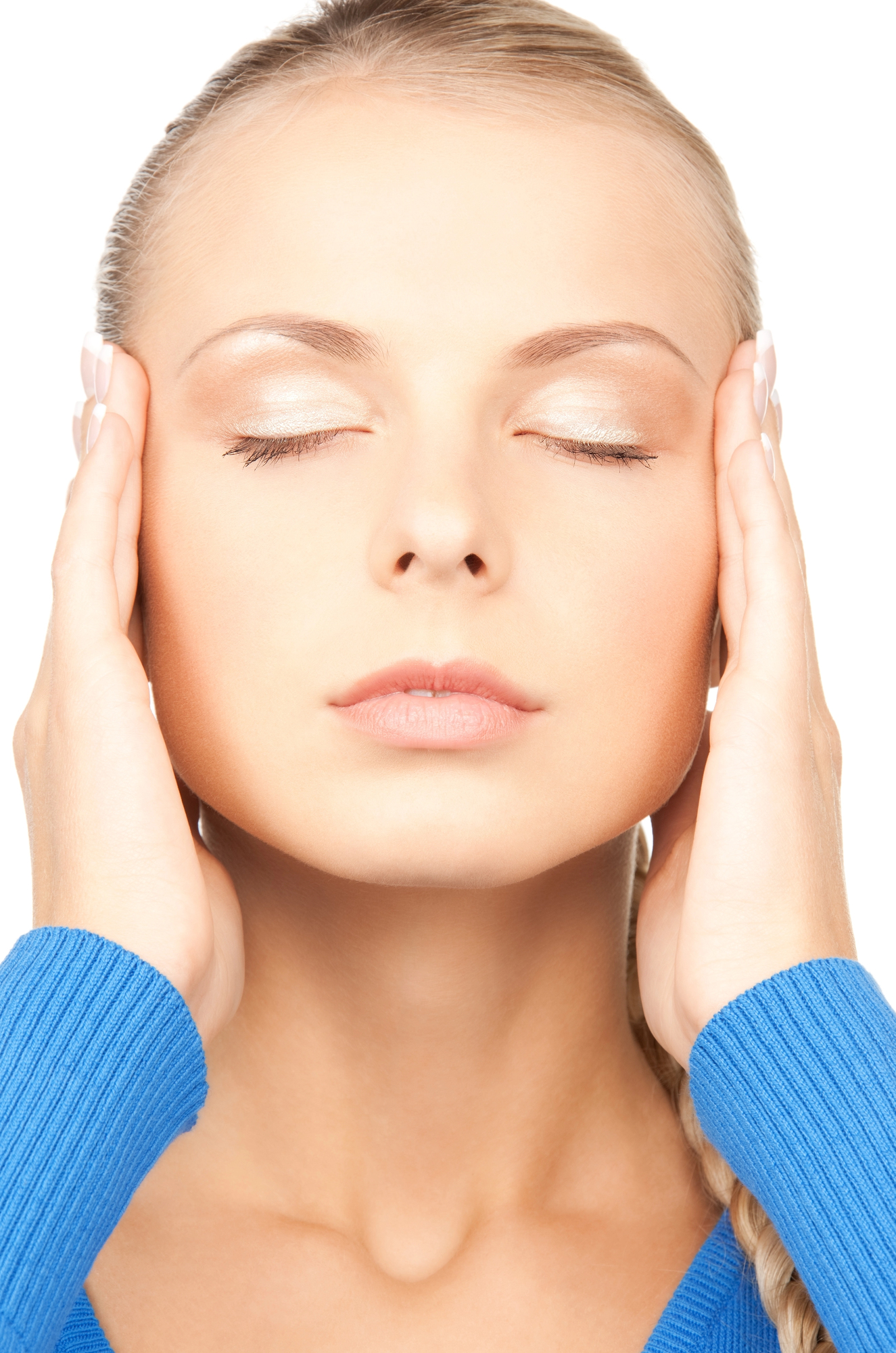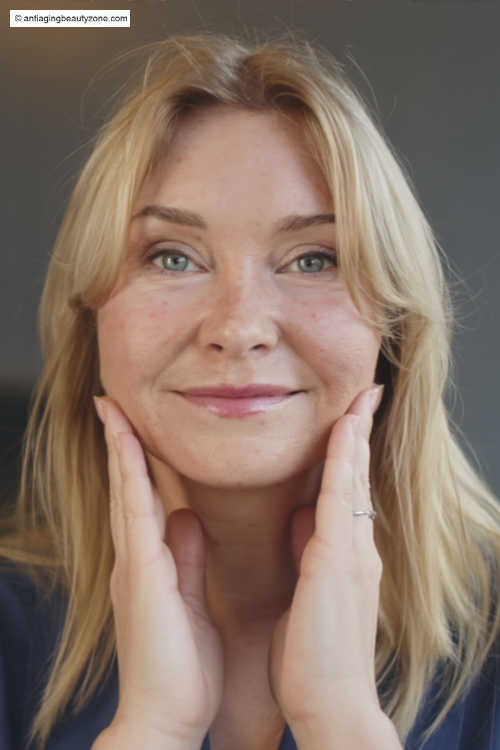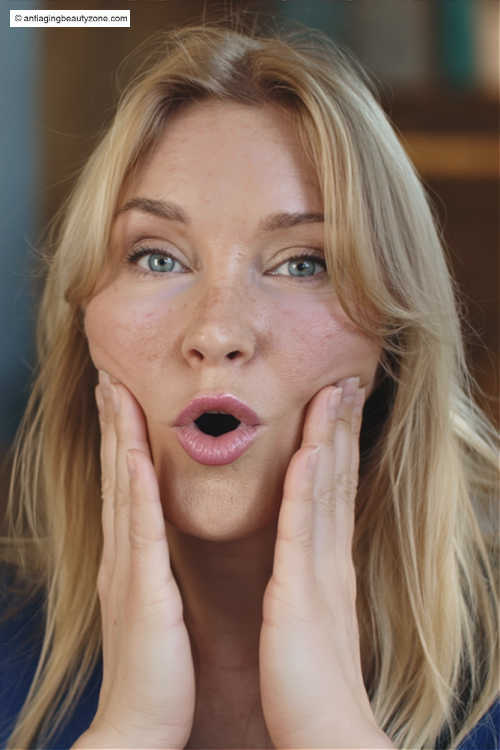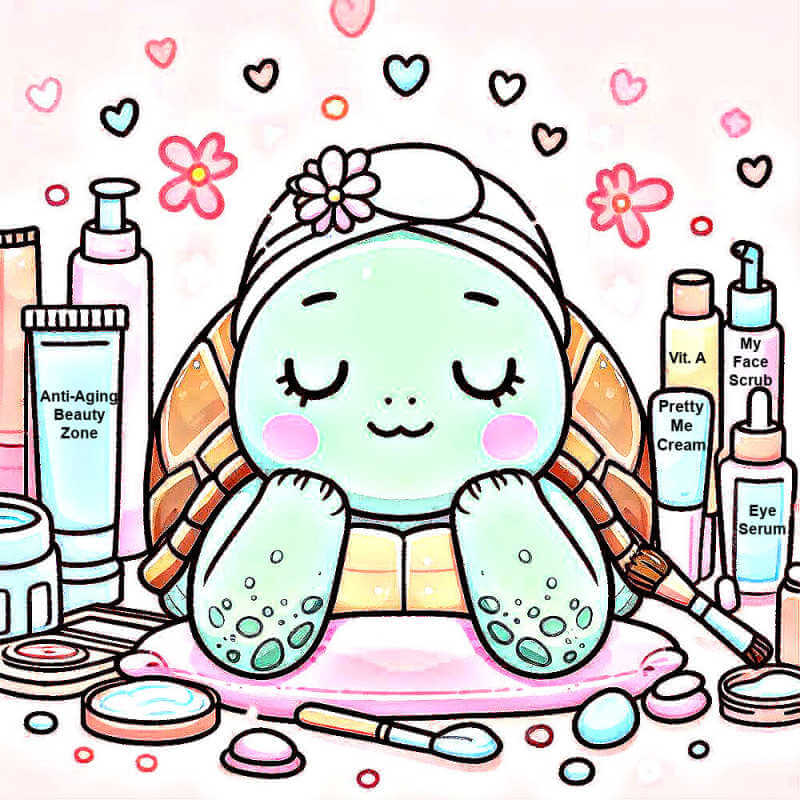As an Amazon Associate, I earn from qualifying purchases and other affiliate links. I only recommend products I’ve tried or researched.
- Home
- Facial Exercises
- Jowl Lift Without Surgery
Jowl Lift Without Surgery: How to Improve the Look of Your Lower Face
by: Linda Robison / Facial Fitness Specialist
Noticing your jawline looking softer—or little folds at the corners of your mouth showing up in every selfie? You’re not imagining it.

The good news: small daily tweaks can help it look more defined. Inside, you’ll find simple at-home wins and a two-move starter routine you can do with your hands—no gadgets required.
Want the complete sequence? See Jowl Exercises That Work. Curious about pro treatments? There’s a short overview near the end (totally optional).
What you’ll find here
- At-home quick wins that make the jawline look cleaner (hydration, smoother skin, and tiny habits that add up).
- A two-move starter routine you can do with your hands and a little moisturizer—then link to my full sequence for more.
- A simple overview of non-surgical options so you know what to ask about.
Fast start
- AM: Layer a hydrating serum, then a ceramide cream, and take SPF down the jaw/neck. Well-hydrated skin looks plumper, casts fewer “shadow” lines, and makes the area look a bit firmer and smoother.
- PM: After moisturizer, press a thin oil-rich balm along the jawline/neck to lock in moisture overnight so it looks smoother and more supple by morning.
Why jowls show up
Jowls are simply the soft skin that begins to sag along the jawline as we get older. For most of us, it’s part of the natural changes in our face over time.
A few things usually play a role:
- Gravity and time – our skin and tissues don’t bounce back as quickly as they once did.
- Shifts under the skin – fat pads that once sat higher in the cheeks slowly move downward.
- Skin changes – skin may look looser when it doesn’t have the same firmness or hydration it once had.
- Daily habits – things like sun exposure, stress, or even posture can make the changes more noticeable.
Not everyone develops jowls in the same way or at the same age. Some people see them earlier, others much later—it often comes down to a mix of genetics, lifestyle, and everyday wear-and-tear.
The good news? While you can’t stop time, simple at-home steps—like exercises, massage, and good skincare—can help keep the jawline looking a bit more defined.
At-home appearance boosters (start here)
Hydrate, smooth, and protect. These basics help the lower face look smoother and a bit more defined—then the gentle massage/exercises below add an extra boost in appearance.
- Hydrate (moisture): Layer a humectant serum (hyaluronic acid), then a ceramide cream. At night, press a thin oil-rich balm along the jaw/neck for a smoother look by morning.
- Smooth (retinol): Use a retinol/retinoid 2–3×/week to help skin look smoother over time. Go slow, moisturize, and always wear SPF.
- Protect (SPF): Take broad-spectrum SPF (with a PA++ rating) down the jaw and onto the neck every day to help maintain results.
Want a little more? Follow this with my gentle lower-face exercises routine—clean hands, a bit of slip, light pressure.
Gentle lower-face work (starter routine)
Light, slip-assisted work can help the lower face look less puffy and a bit more lifted by softening mouth-corner tension and encouraging fluid movement.
Before you start: wash hands, apply a little face oil or moisturizer, use light pressure, and stop if anything feels uncomfortable.
1) Jawline Glide (3–5 passes)
Place your fingers under your jaw at the center of your chin. And gently glide outward along the jawline toward the ears in one slow sweep, keeping light contact with the skin.

2) Mouth-Corner Soft Lift (5 gentle lifts)
Make a soft “O” with your mouth. Place the pads of your fingers just beside the mouth corners. Make a smooth upward-and-outward lift toward the cheekbones, hold for a count of 3, then release.

Finish (optional): Sweep from chin to ears 3 times to encourage fluid to move away from the center. This 30–60 second mini set is a great base.
Want a little more? Try two quick Jowl Exercises That Work.
Curious if really makes a difference? See my Jowl Exercises Before & After photos for my 6-month progress and long-term results.
Non-surgical options to discuss with a pro
- Radiofrequency tightening (e.g., RF devices): heats deeper tissues to improve the appearance of firmness over time.
- Focused ultrasound (e.g., ultrasound lifting): targets support layers for a subtle lift-like look in some patients.
- Strategic volumizing/contour fillers (mid-face or jawline): can help the jawline appear more defined.
A licensed provider can help you understand what’s realistic and whether maintenance is needed.
Takeaway
You can’t lift tissue without surgery—but you can lift the look of jowls. Well-hydrated, smoother skin plus a gentle routine can make the area appear firmer and more defined.
For more at-home ideas, see my Full Face Workout and other non-surgical options for a turkey neck.
Want in-office help? Ask a licensed provider about radiofrequency, ultrasound, or strategic contouring to see what’s realistic for you.
What studies suggest:
- A small study found appearance improved after 8 weeks of facial exercises, with gains at 20 weeks. [1]
- Reviews say muscle-retraining may support a subtly lifted look; results are modest and vary. [2, 3]
- Practitioner perspective: some contracting/sliding techniques may support underlying structures; exploratory only. [4]
FAQ
Question: Can I lift jowls without surgery?
Question: Can I lift jowls without surgery?
Answer: You can’t physically lift tissue without surgery, but you can improve the look with hydration, gentle lower-face work, and contour options.
Question: How long until I notice a difference at home?
Question: How long until I notice a difference at home?
Answer: It varies. With consistent care, many people notice a softer look within a few weeks.
Question: Do I need tools for the routine?
Question: Do I need tools for the routine?
Answer: No—clean hands and a little slip (moisturizer or oil) are enough.
Question: Are device treatments permanent?
Question: Are device treatments permanent?
Answer: No. Most non-surgical options need maintenance. A licensed provider can advise based on your goals.
Question: Do I need to exercise my whole face, or just the jowls?
Question: Do I need to exercise my whole face, or just the jowls?
Answer: It’s better to include the whole face, not just the jowl area. A balanced routine keeps everything looking natural and avoids overworking one spot.
Question: Can fillers fix sagging jowls?
Question: Can fillers fix sagging jowls?
Answer: Some people try fillers in the jawline, but results can vary. They may add volume, but they don’t address the underlying skin and muscle changes. Exercises and massage focus on those foundations instead.
Helpful next reads
- Jowl exercises that work (gentle routine)
- Jowl before and after photos
- Daily habits for beautiful lips (mouth-corner tension ties into lower-face look)
- At-home face-lift massage for firmer, smoother skin
- Why buccal fat removal will not fix your jowls
References:
2. Enhancing Facial Aesthetics with Muscle Retraining Exercises-A Review - Available on NIH/PMC.
3. Does your face need a workout? - Harvard Health
About the Author:
Linda Robison is a Facial Fitness Specialist and the founder of Anti-Aging Beauty Zone. With decades of hands-on experience, she shares practical, natural ways to lift and brighten mature skin—without expensive or invasive treatments.
Before you go ....
Please tap on the💙in the bottom right corner if you found this page helpful.
FOLLOW ME FOR MORE TIPS:
SHARE OR SAVE FOR LATER:




